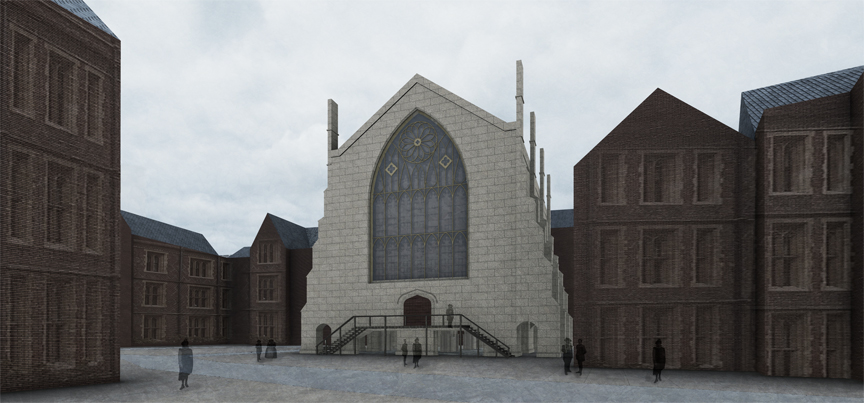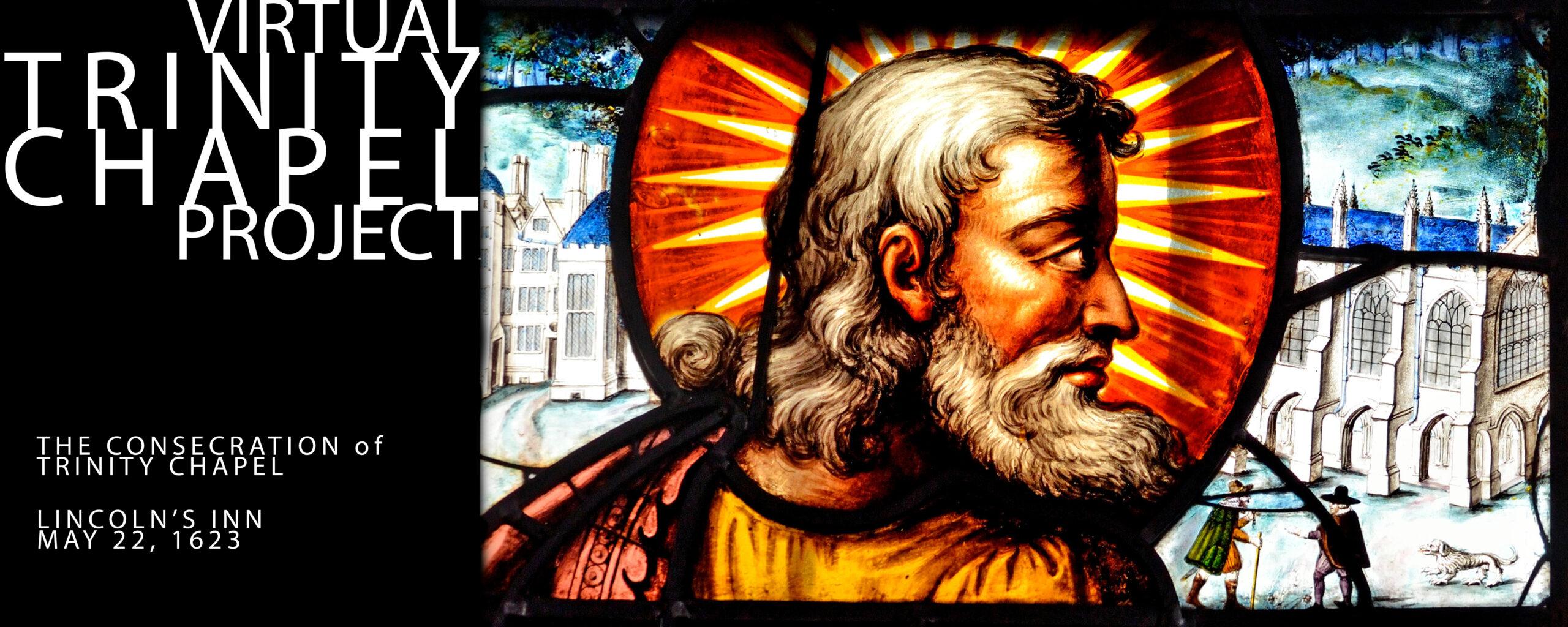Overview
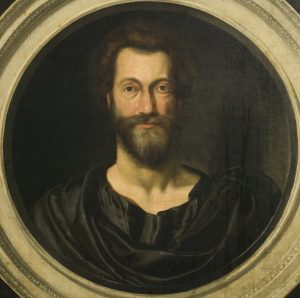
. . . as this day wee celebrate his Ascension to thee, bee pleased to accept our endeavour of conforming our selves to his patterne, in raysing this place for our Ascension to him. Leane upon these Pinnacles, O lord as thou diddest upon lacobs Ladder , and hearken after us.
Bee this thine Arke, and let thy Dove, thy blessed Spirit, come in and out, at these Windowes: and let a full pot of thy Manna, a good measure of thy Word, and an effectuall preaching thereof, bee evermore preserved, and evermore bee distributed in this place . . . . .
And in these walles, to them that love Profit and Gaine, manifest thou thy selfe as a Treasure, and fill them so; To them that love Pleasure, manifest thy selfe, as Marrow and Fatnesse, and fill them so; And to them that love Preferment , manifest thy selfe, as a Kingdome, and fill them so; that so thou mayest bee all unto all; give thy selfe wholly to us all, and make us all wholly thine.
— The Rev. John Donne, Trinity Chapel, Lincoln’s Inn, the Feast of the Ascension, 1623
On the grounds of London’s Lincoln’s Inn, between the hours of 8 and 11 in the morning of Thursday, May 22nd, being Ascension Day in 1623, the Rt Rev George Montaigne, Bishop of London, and his staff conducted a worship service that constituted a service of consecration for Lincoln’s Inn’s newly constructed Trinity Chapel, opening it officially for use as a worship space by the members of the Inn.
Lincoln’s Inn, recognizing that 2023 marks the 400th anniversary of the Consecration of Trinity Chapel, has planned a series of events running throughout the year to celebrate the event. Go here to see a schedule of these events: https://www.lincolnsinn.org.uk/wp-content/uploads/2022/12/Chapels-400th-Anniversary-Events-FINAL.pdf
They have also produced a video describing the events of Ascension Day 1623, go here: https://www.lincolnsinn.org.uk/library-archives/tales-from-the-archive/into-the-archives-the-consecration-of-the-chapel/
Note well concerning dates — The date of the Feast of the Ascension is always 40 days after the date of Easter Sunday, thus is always a Thursday. The date of Thursday, May 22th described by the Bishop of London’s Deed of Consecration and Lincoln Inn’s official account of the Consecration ceremony as being the Feast of the Ascension in 1623 is according to the Julian Calendar, on which, according to the Book of Common Prayer (1604), the date of Easter in 1623 was Sunday, April 13th. The Julian Calendar was in use in England until 1752, when it was replaced by the Gregorian Calendar.
In 1623, the Julian Calendar had fallen 10 days behind the Gregorian Calendar, already in use in much of Europe after its introduction in 1582. Converting calendars for the date of Easter is not just a matter of adding 10 days to the Julian Calendar date because the date of Easter depends on the date of the First Full moon after the Vernal Equinox (March 21st) and the moon functions on its own calendar. So, on the Gregorian Calendar, our calendar, in 1623 Easter Day fell on April 16th, and the Feast of the Ascension fell on the Thursday forty days later, thus on May 25th.
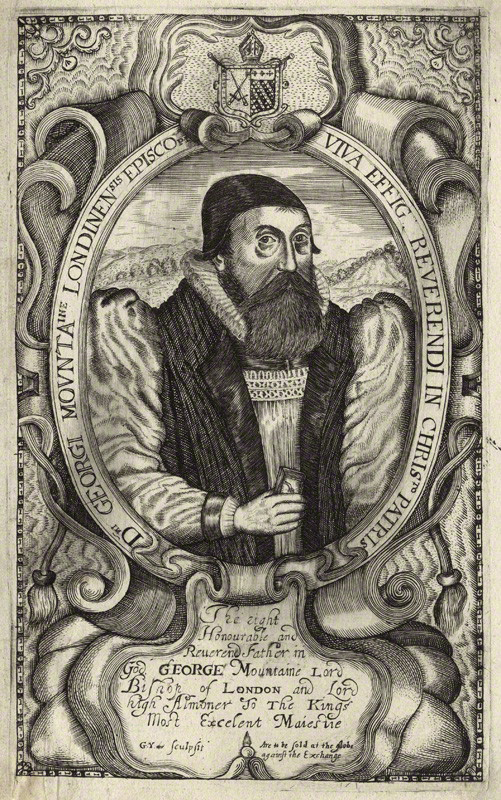
PURPOSE
This website brings together a wide variety of materials documenting the Service of Consecration for Trinity Chapel. As we will learn, this worship service is one of the most fully documented worship services to take place in England in the early modern period. As a result, it gives us a remarkably detailed, almost minute-by-minute account of a worship service conducted by members of the Church of England in the post-Reformation period.
Unique to this event, there is both visual and written evidence of what took place.
The service Bishop Montaigne conducted consisted of the full set of morning rites, as directed by the rubrics of the Church of England’s Book of Common Prayer (1604), that is, Morning Prayer (or Matins), the Great Litany, and Holy Communion.
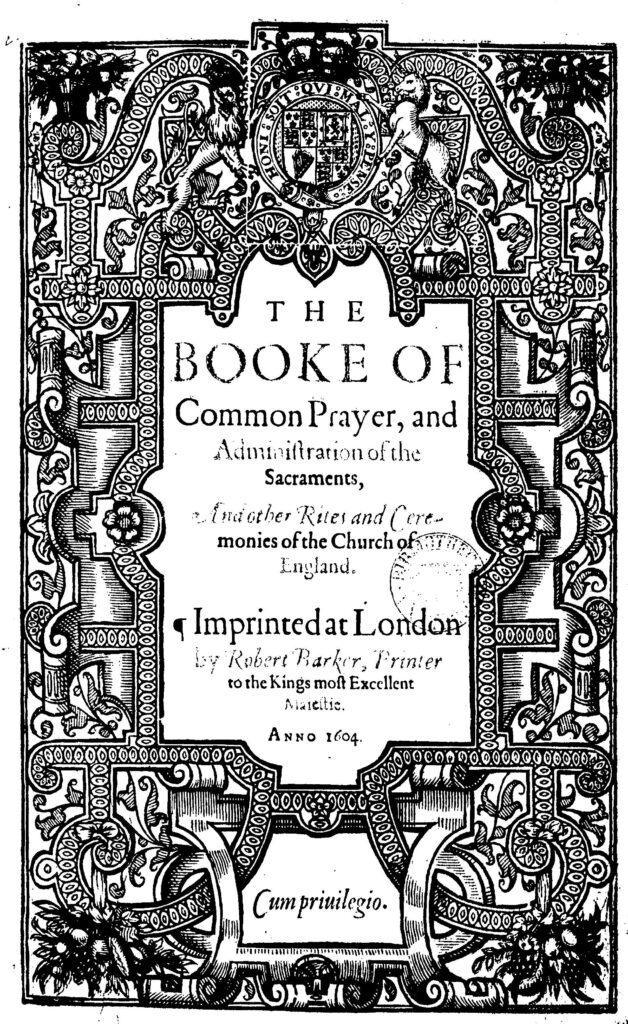
On that day, which happened to be the Feast of the Ascension, the Rev John Donne, Dean of St Paul’s Cathedral, preached the sermon. Donne was an appropriate choice for preacher on this occasion because he had held the post of Preacher to the Inn from 1616 until he was appointed Dean of St Paul’s Cathedral in 1621. While at the Inn, Donne had been instrumental in the planning, fund-raising, and construction of Trinity Chapel. One of Donne’s sermons from this period, we are told, was “Preached at Lincoln’s Inn, preparing them to build their Chapel.”
In fact, Donne was able to lay in place the cornerstone of the new building with his own hands in 1621. Donne’s contribution to the construction of Trinity Chapel is recorded in one of the chapel’s stained glass windows. Loosely translated, the Latin inscription reads, “I, John Donne, Dean of St Paul’s, caused this to be made.”

Donne’s transcript of his sermon survives, having been published by Donne soon after its delivery, Donne tells us, “in obedience to that which [members of the Inn] may call your request but I shall call your Commandment.”
The events of that morning were documented in a variety of venues and by a number of people.
The Archives of Lincoln’s Inn hold Bishop Montaigne’s Charter, or official account, of the occasion. This document consists of a listing of Bishop Montaigne’s official acts on this occasion. Also in the Archives is a detailed account of the Service of Consecration itself, including information about who spoke, and what they said, and where they stood at the time.
The Archives also contain accounts of the construction in the Black Books of the Inn’s administrative meetings, as well as the Bill from Price the Joiner for construction of the interior furniture, which also includes information about where inside the Chapel the furniture was located. This information has made it possible to reconstruct the original floor plan of the Chapel.
Three contemporary accounts of the service, and of John Donne’s sermon, also come down to us. One is found in a letter John Chamberlain wrote to his friend Dudley Carleton, dated May 30, 1623, in which Chamberlain reports that the crowd present for the service was large and that Donne “made an excellent sermon (they say) concerning dedications.”
A second account, an anonymous document now in the manuscript collection of the Society of Antiquaries, reports on the size of the crowd and describes the sequence of events in the Consecration service, but gives a different report than Chamberlain on the quality of Donne’s sermon, finding that Donne, in his sermon “showed superficiem but not Medullam Theologiae haveinge Eloqentiae satis but sapientiae parum” (showed the surface but not the core of theological content, having appropriate eloquence but little wisdom).
The third of these accounts is a set of notes on Donne’s sermon by Francis Russell, who would inherit the title of the Earl of Bedford when his cousin Edward, husband of Lucy Harrington Russell, Donne’ friend and patron, died in 1627. All these accounts are to be found under the “Aftermath” tab on this website.
In addition to all this documentation of the Service of Consecration, Trinity Chapel itself is one of the most thoroughly documented buildings in the early modern period.
This documentation by visual record extends from 1623, found in the the stained glass in Trinity Chapel, to 1660 in Wenceslaus Hollar‘s birds-eye view of the Inn, to 1751, shown in George Vertue’s engraving, to the early 1800’s and beyond. Go here to review a series of images of Trinity Chapel from 1623 to the present day.
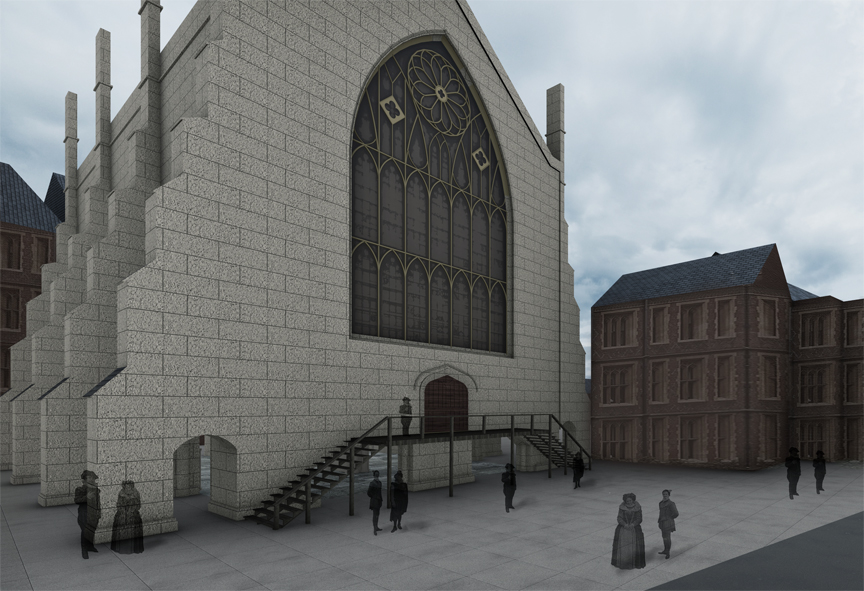
We have used all this data to reconstruct both exterior and interior models of Trinity Chapel as we believe it looked on May 25, 1623 at 10:00 in the morning. These images incorporate what we have learned from carful review of this body of evidence.
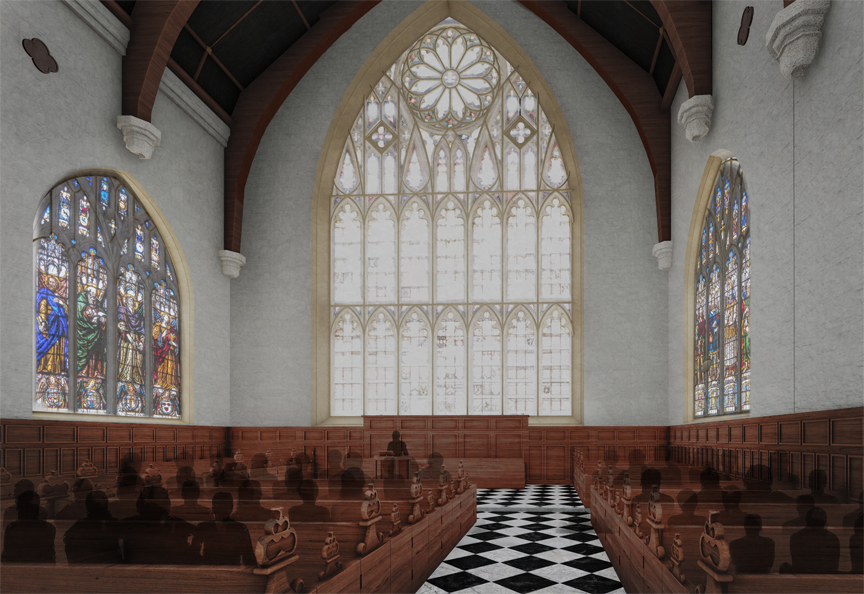
For more extended discussions of many of the issues raised by the history of Trinity Chapel, please read earlier reviews of the evidence — “Situating Donne’s Dedication Sermon at Lincoln’s Inn, 25 May 1623,” in John Donne Journal 26 (2007), 159 – 239 and “Worship at Trinity Chapel, Lincoln’s Inn, London, 25 May 1623, in Anglican and Episcopal History (2012), 113 – 210. The essay in Anglican and Episcopal History was awarded the Nelson Burr Prize in Church History by the Historical Society of the Episcopal Church in 2013.
This site adds to the work published in those journals new and additional materials bearing on the Consecration Service at Trinity Chapel, as well as Donne’s role in the service, and the social and political context for this event.
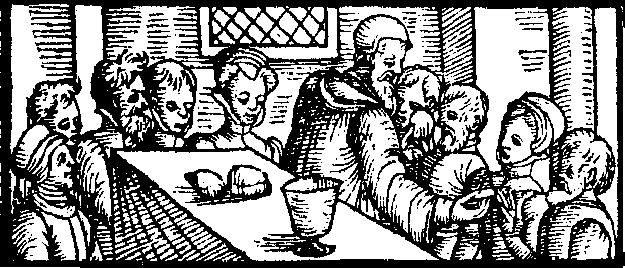
Celebration of Holy Communion, Distribution of the Consecrated Host. Image courtesy Wikimedia Commons.OUTCOMES
REVIEW
Reviews in Digital Humanities for June 2024 (https://reviewsindh.pubpub.org/pub/the-virtual-john-donne-project/release/1) has a very positive review by Erin McCarthy (University of Galway).
Samples from McCarthy —
“The sites are therefore able to offer users deep, immersive experiences of specific points in time rather than broad generalizations about early modernity, the 17th century, or a similarly capacious temporal span.”
“The technology is highly sophisticated, drawing upon best practices not only in digital humanities but also in architecture and acoustics. Consequently, the project not only offers a rich interactive experience for humanities scholars but represents a genuine contribution to these disciplines as well. The project sites thoroughly document the evidence underlying the creation and implementation of each model. What becomes very clear is that every detail, from the ambient noise in a sermon recording to the neighboring buildings visible in the visual models, has been considered and chosen purposefully.
“[The Virtual Donne] thus exemplifies the potential for innovation, impact, and reach that truly collaborative, interdisciplinary digital work can have.”
